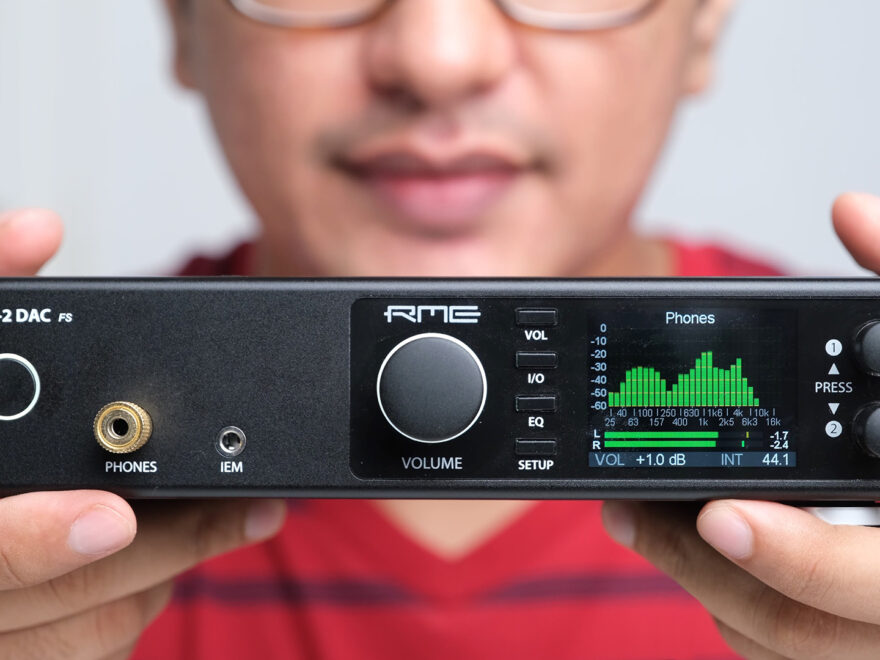I must’ve reviewed around 150 products on the channel by now, but I don’t think that there has been any product that has blown my mind as much as the RME ADI-2 DAC FS which we’re going to take a look at today. Even when a product is very well designed, I am mostly able to find something to nitpick about, and the last product category that I would have expected to deliver to this imaginary golden standard would be a Digital to Analog Audio Convertor, because DACs are the simplest of devices, you just plug them in, and forget about them. But the Engineers at RME, for some reason, have created the most well thought out product.
They have added all the features and functionality that I could imagine to have in a DAC, AND then they’ve then added things that I never even knew existed or were possible. I don’t even know what motivated them to make this product, because they could have sold this very well, even with 1/4th of the features that it currently has.
And if you’re thinking that I am exaggerating how good it is, consider the fact that this DAC,has a dual BIOS system, so if you’re upgrading the firmware and it fails, it can use its safety BIOS to boot up.
If you’re thinking that I am exaggerating, consider the fact that this DAC allows you to adjust the color tint of its display, so if after a long time of use, this display becomes yellowish, you can correct that by adjusting the color temperature. And we have not even reached close to the actual functionality of this device, which is to convert a Digital signal to an analog signal so you can get high quality sound from your PC or other media player to your speakers and headphones.

Before I got this DAC, I had to use a very complicated setup with many cables, but this DAC just replaced everything, AND it also replaced the Equalizer APO software that I had to use which I really wasn’t expecting as that is a very advanced software.
In this review, we’ll talk about how it is the ultimate audio solution for even the most demanding of audiophiles, and before we begin, I will tell you that this DAC costs around 1200 US Dollars, or around 1.1 Lakh Rs. in India, and while that is a very high price tag, it is very easily justified for this product, and I am actually putting my money where my mouth is, because I have actually bought this DAC from Ansata Computers which we’ll talk about, but even if this product is not in your budget, I will recommend that you read this review, because by the end of it, you will have learned a lot about audio in general.
UNBOXING

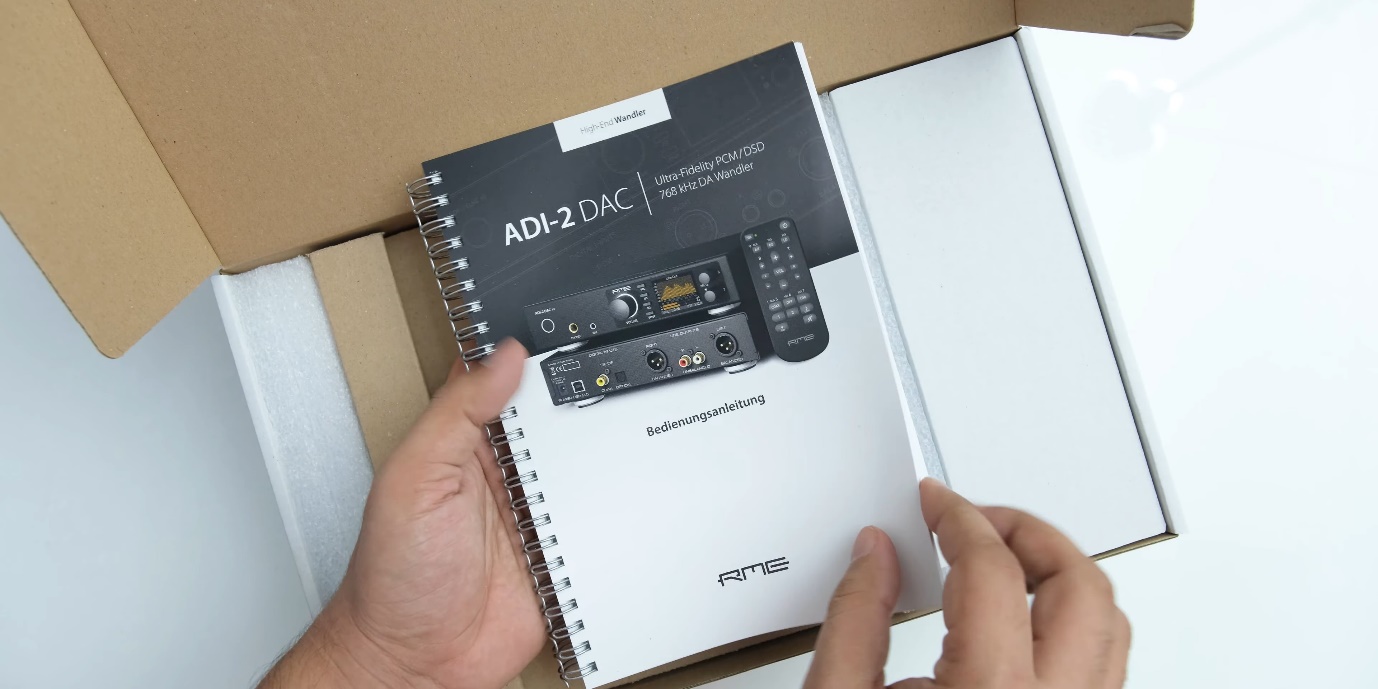

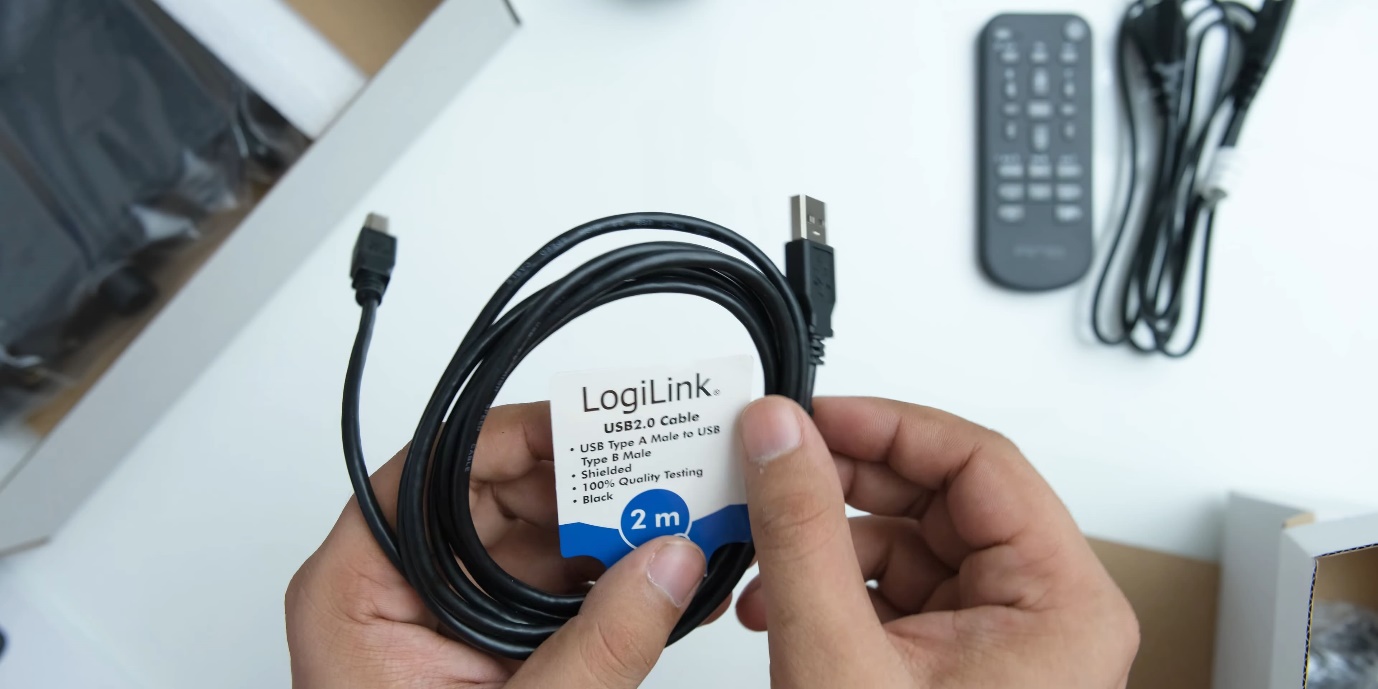

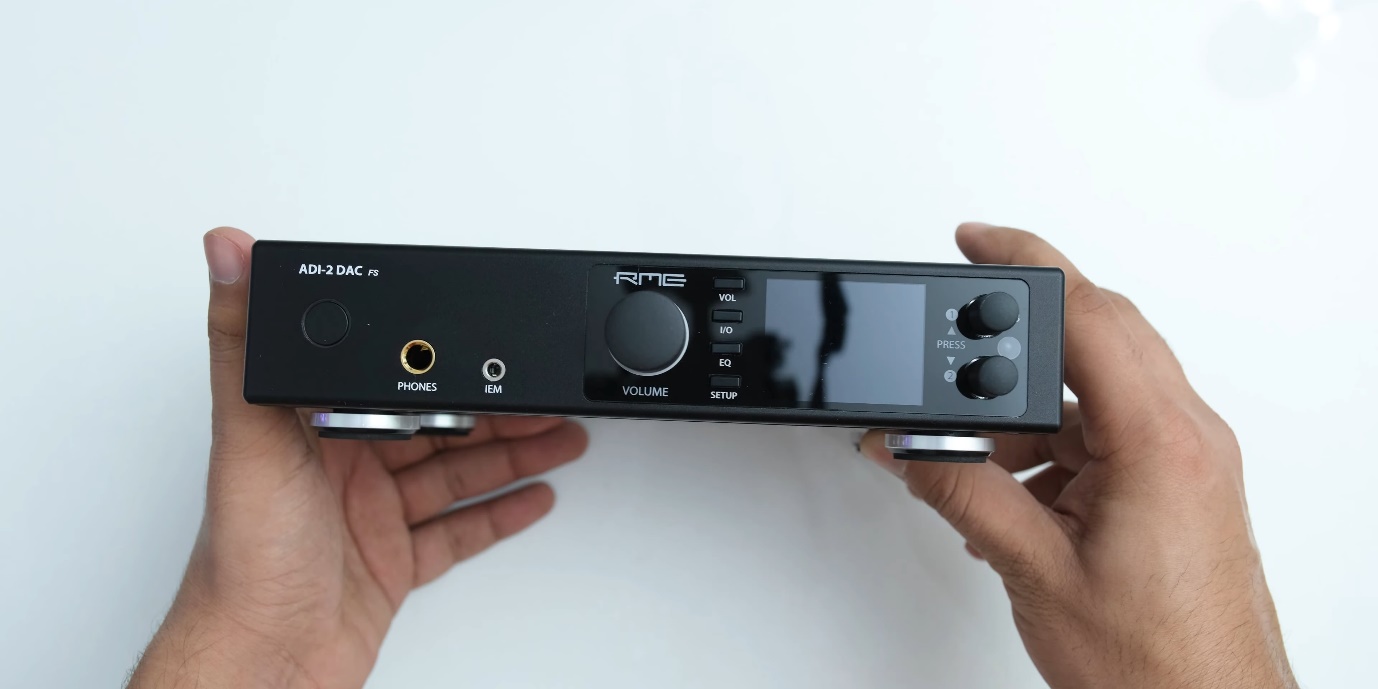
The unboxing experience of the RME ADI 2 DAC isn’t fancy as this is by a brand that focuses on pro audio gear, you get the manual, a remote for controlling many features, a USB cable, the power adapter, and lastly the DAC itself.
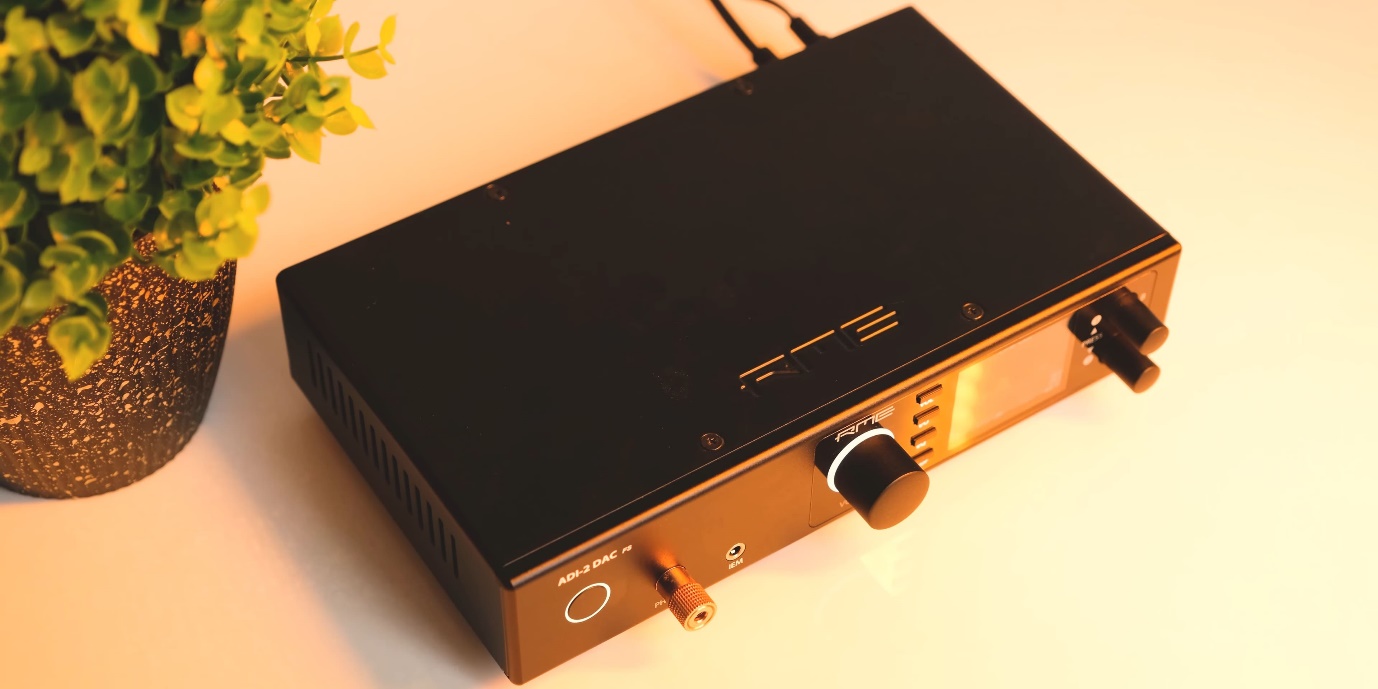
Physically, the RME ADI DAC looks pretty serious and professional, but in a good way. It is a black colored box that doesn’t have anything unnecessary going on with the design.

The DAC does have nice looking feet underneath it, and I am not sure if there is any surface decoupling going on here that helps with its performance.
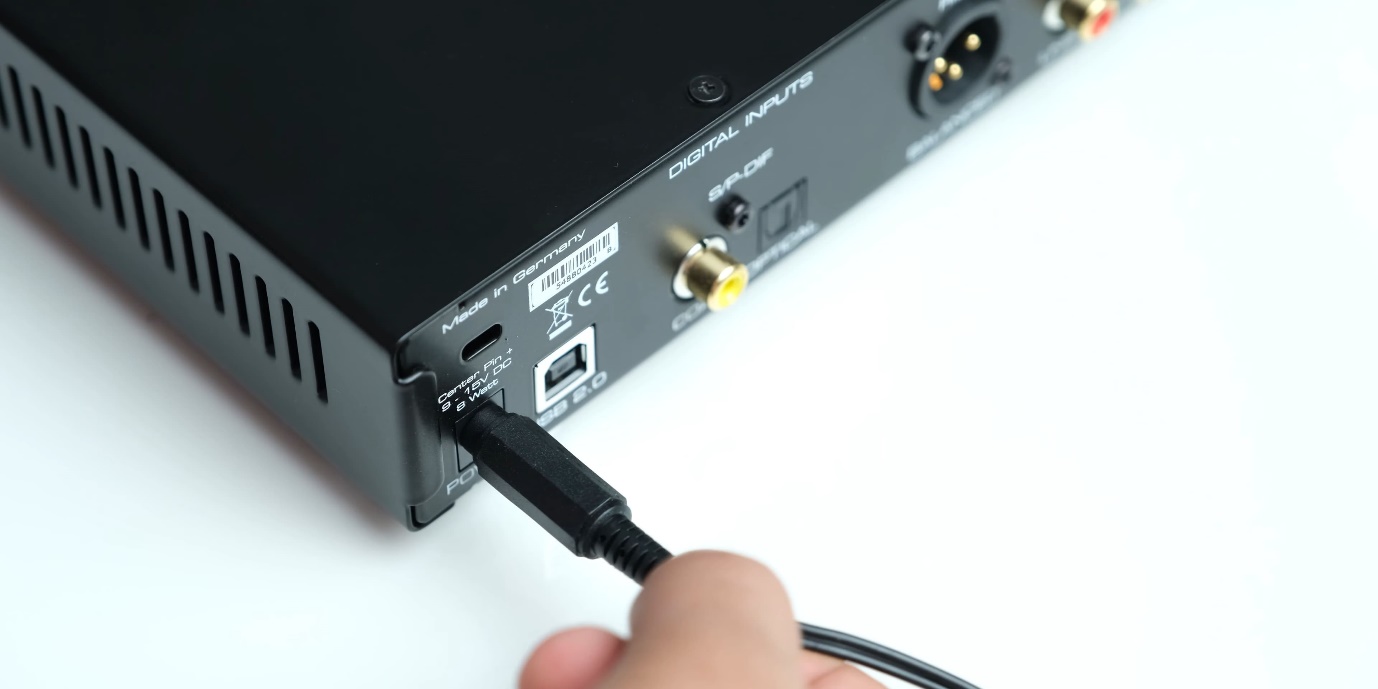 At its back, you have the power adapter jack that is lockable, so it stays secure.
At its back, you have the power adapter jack that is lockable, so it stays secure.
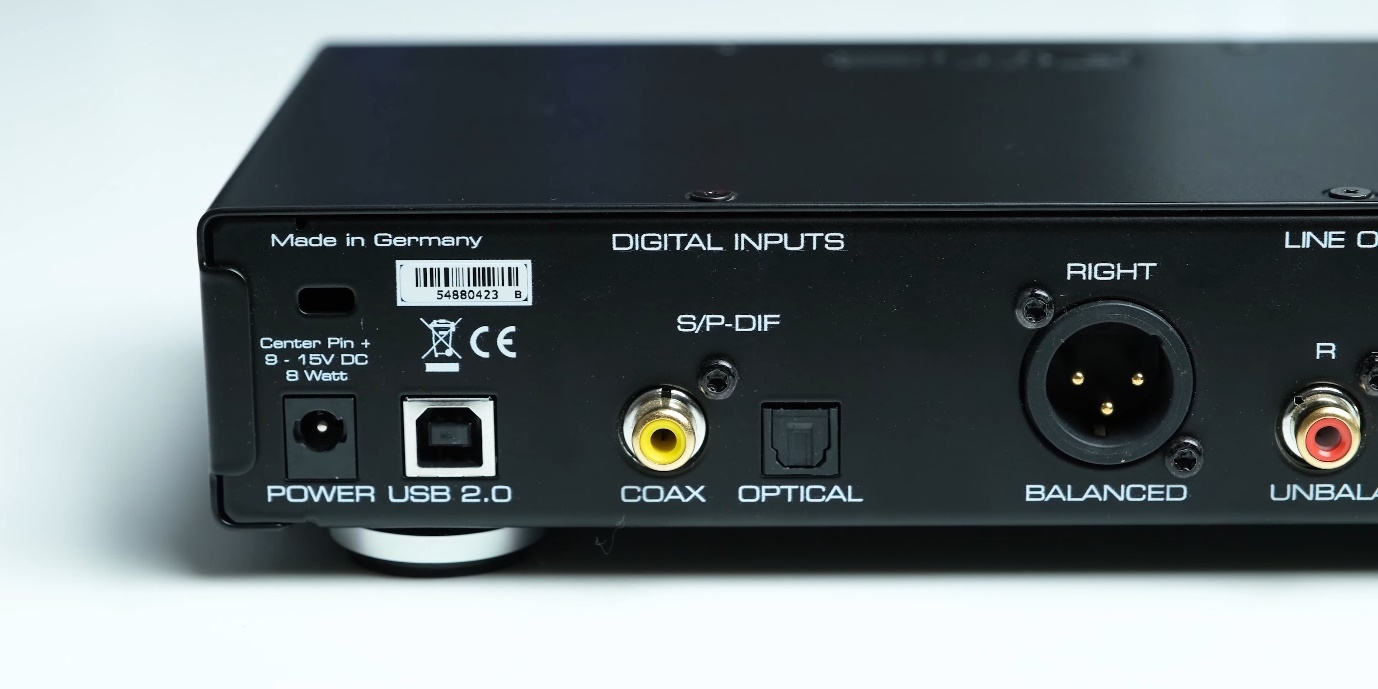
Then you have a USB port, and you also have coaxial and optical in for connecting it with all kinds of devices like TVs, PCs,
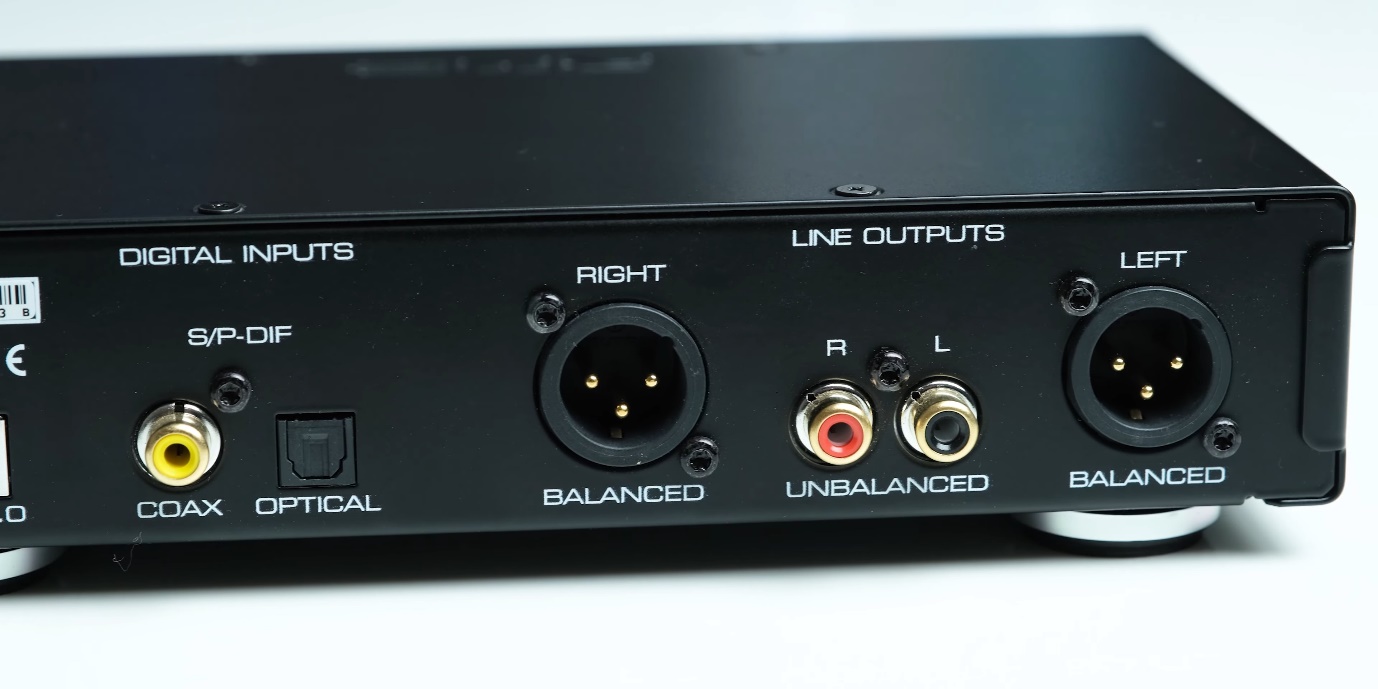 and then we get to its outputs, where we have RCA line out, and a balanced XLR out.
and then we get to its outputs, where we have RCA line out, and a balanced XLR out.

On front you have the power button, then a 6.5mm headphone out port, a 3.5mm port specifically for earphones, and both of these are unbalanced.
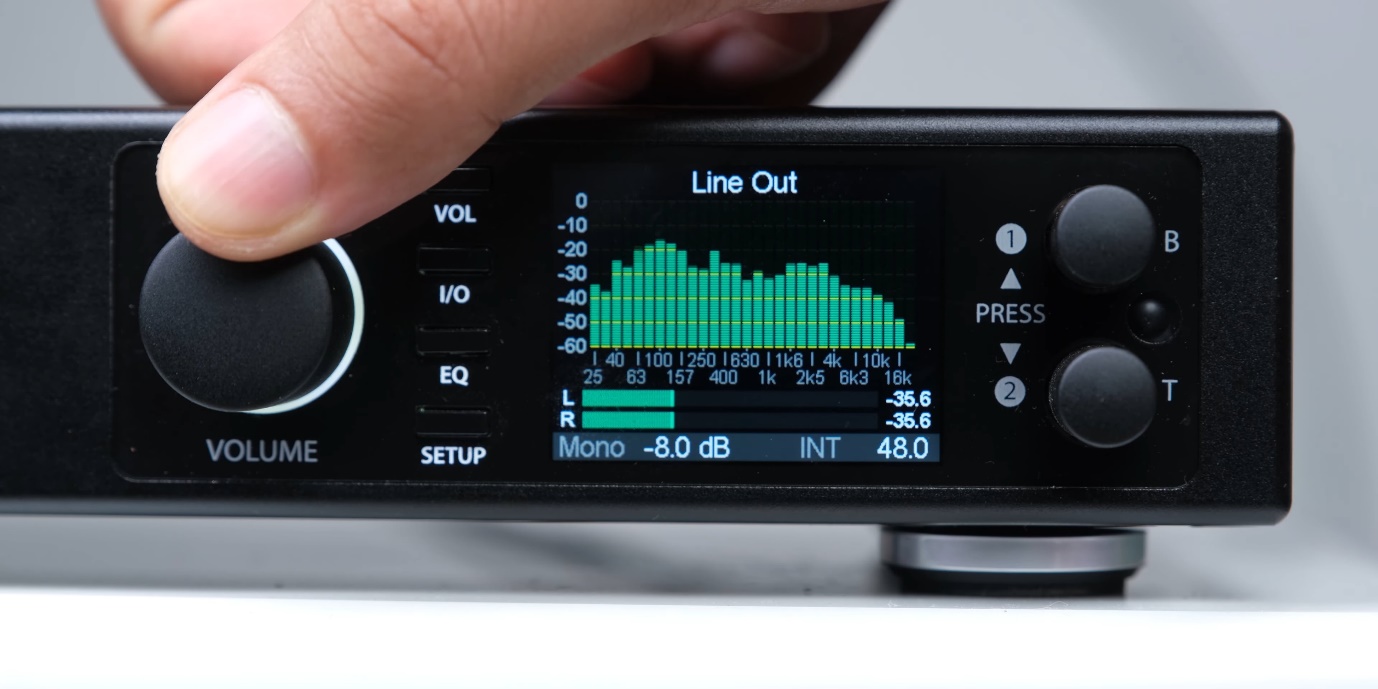
Then you have the big volume wheel that you can also press for different functions, so a single press will mute the DAC, and a long press will change the outputs when you have that function enabled, because you can also make it play through all the outputs at the same time.

Then there are 4 buttons for different settings that have very elaborate menu pages, and these buttons can actually also be assigned different functions to.

Then finally we have the two knobs that can also be pressed, and you will use these to navigate the menu, change settings, and on the home screen, they change the bass and treble levels in audio when you have that enabled, and the frequency and the Q value that they affect can actually also be changed so that really makes this feature much more usable.

The knobs and buttons on the DAC feel really good, you feel the German-ness in their clicks and presses when you operate them, and the faster you turn them, the higher the rate of change is in whatever it is that you are adjusting.
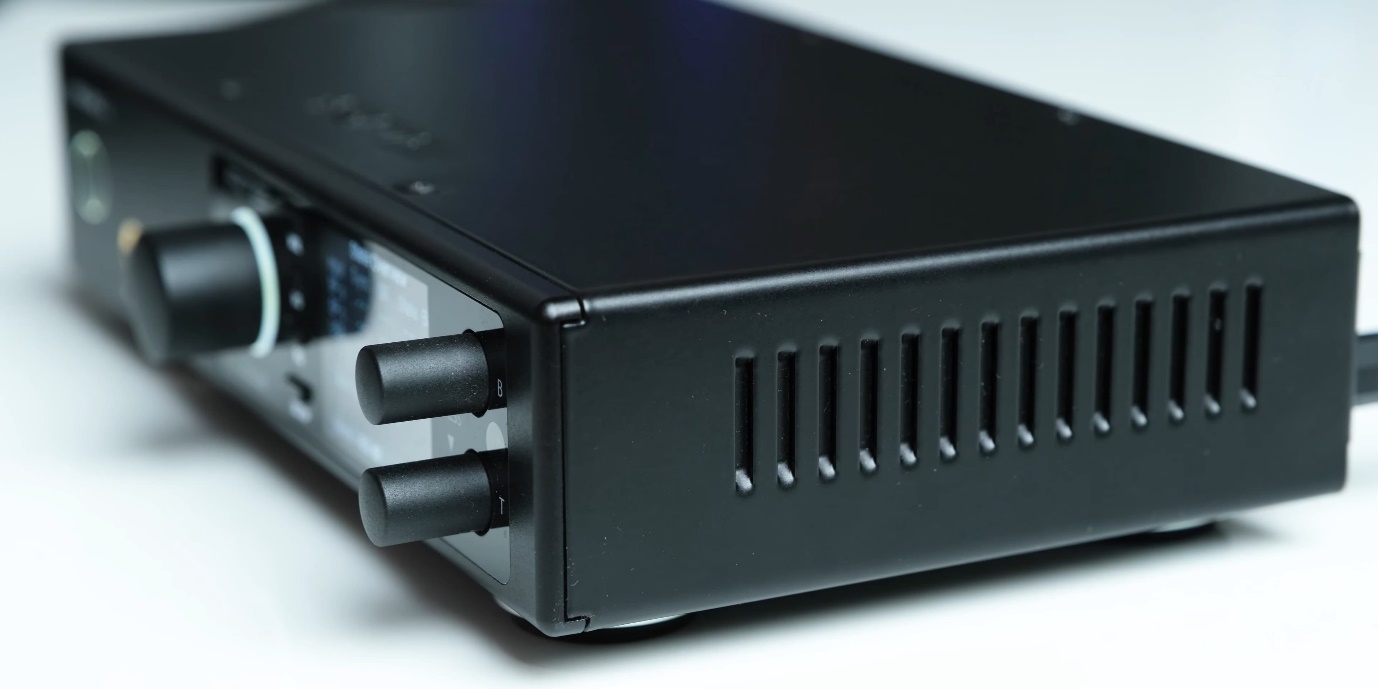
There are vents on the body too but I found the DAC to only stay 7 degrees Celsius above room temperature.

The size of this DAC is actually quite compact for the features and performance that it has, and you’ll see what I am talking about.
SCREEN

The DAC has a 2 inch colored IPS LCD screen with a decent resolution, and a screen like this is really needed to manage all the simple and complex features that this DAC has. You can cycle through different screens when the DAC is in operation, so you can select the 30 band audio analyser that you can use to monitor your signal, and this also lets you know if there’s any clipping going on in your audio (before / after processing).

You can also change the color of this visualizer if you prefer an amber or cyan color.
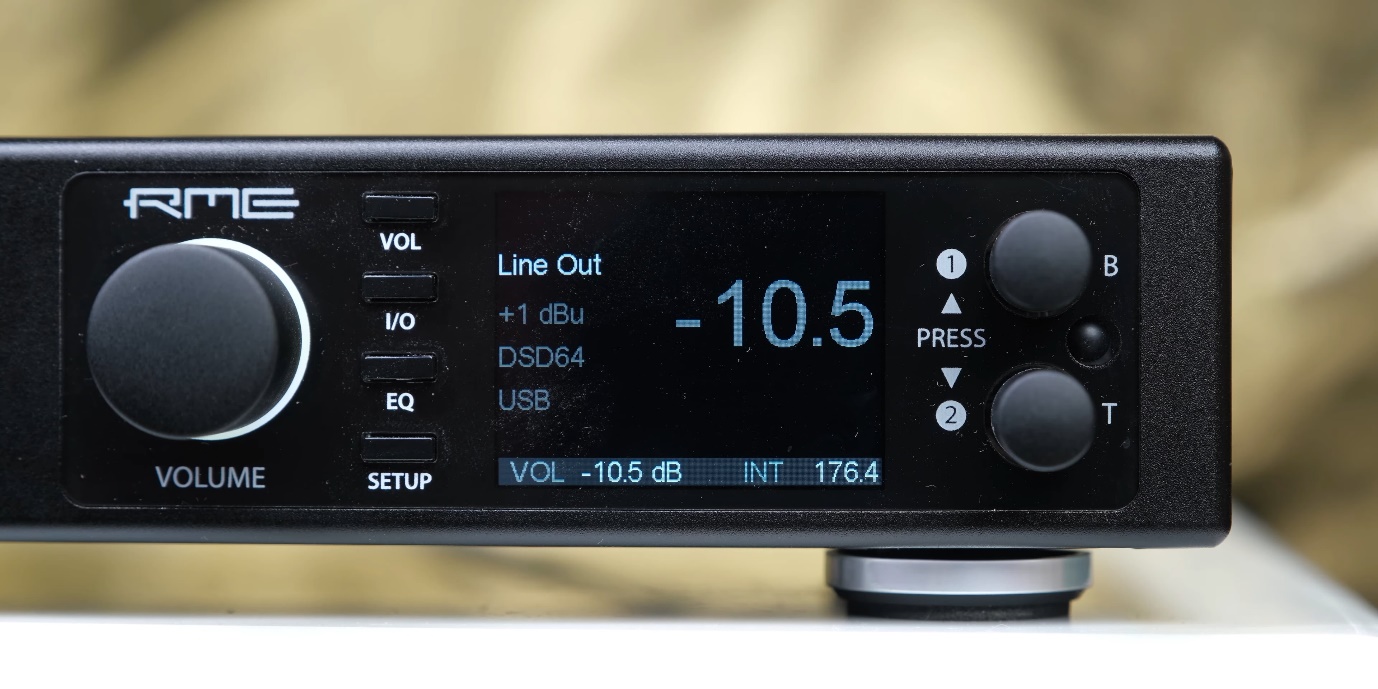
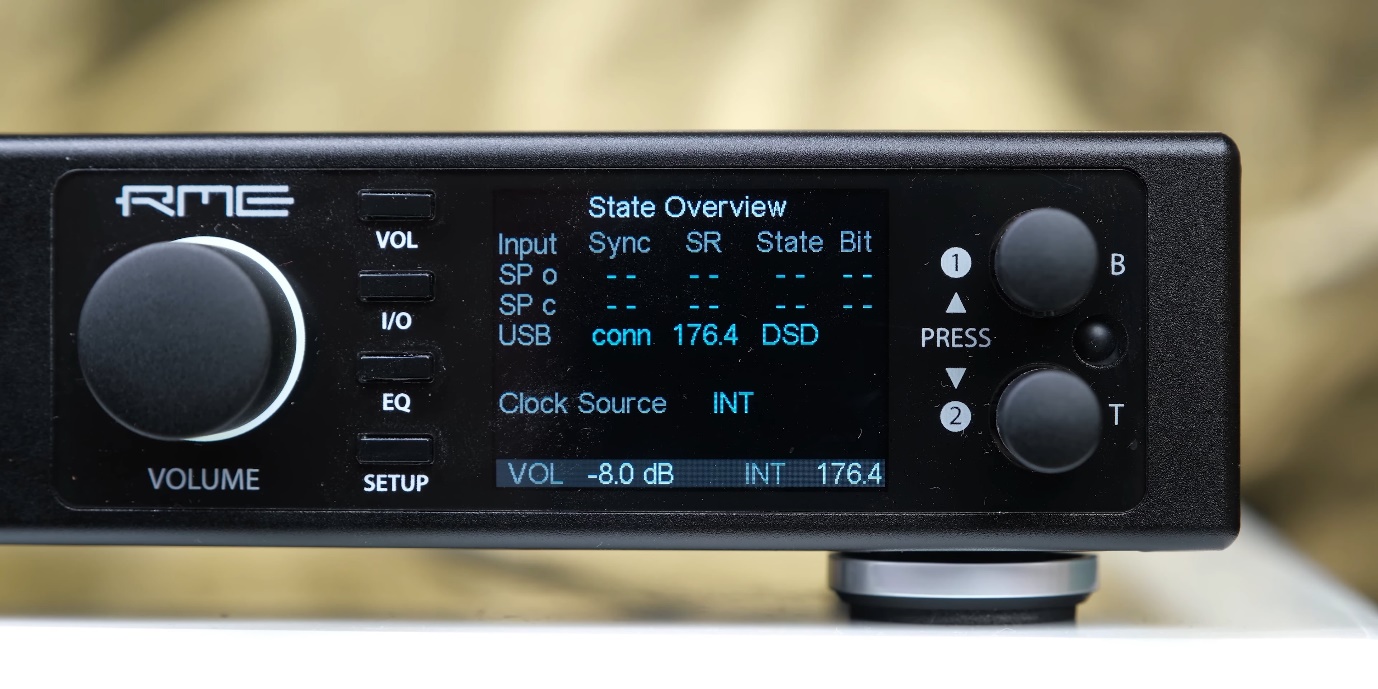
Then there are other screens which have a bigger and more simplified display of the settings, and there is a state overview screen, which will tell you the quality and resolution of the signal that you are feeding to the DAC.

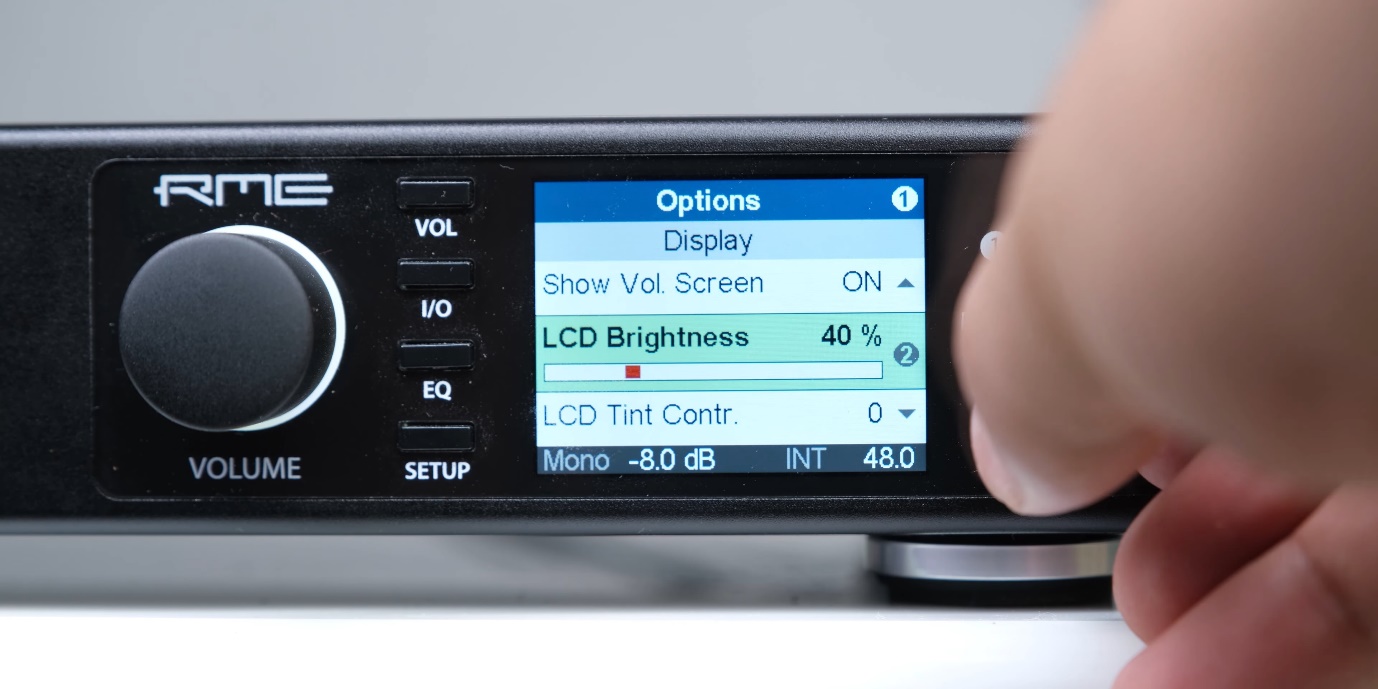
Dark mode on in our smartphone apps is all the rage these days, and the RME DAC also has that for its screen, so you can switch to this theme if you prefer that. You can also of course change its brightness, and it gets so bright that I personally use it at 40% level.
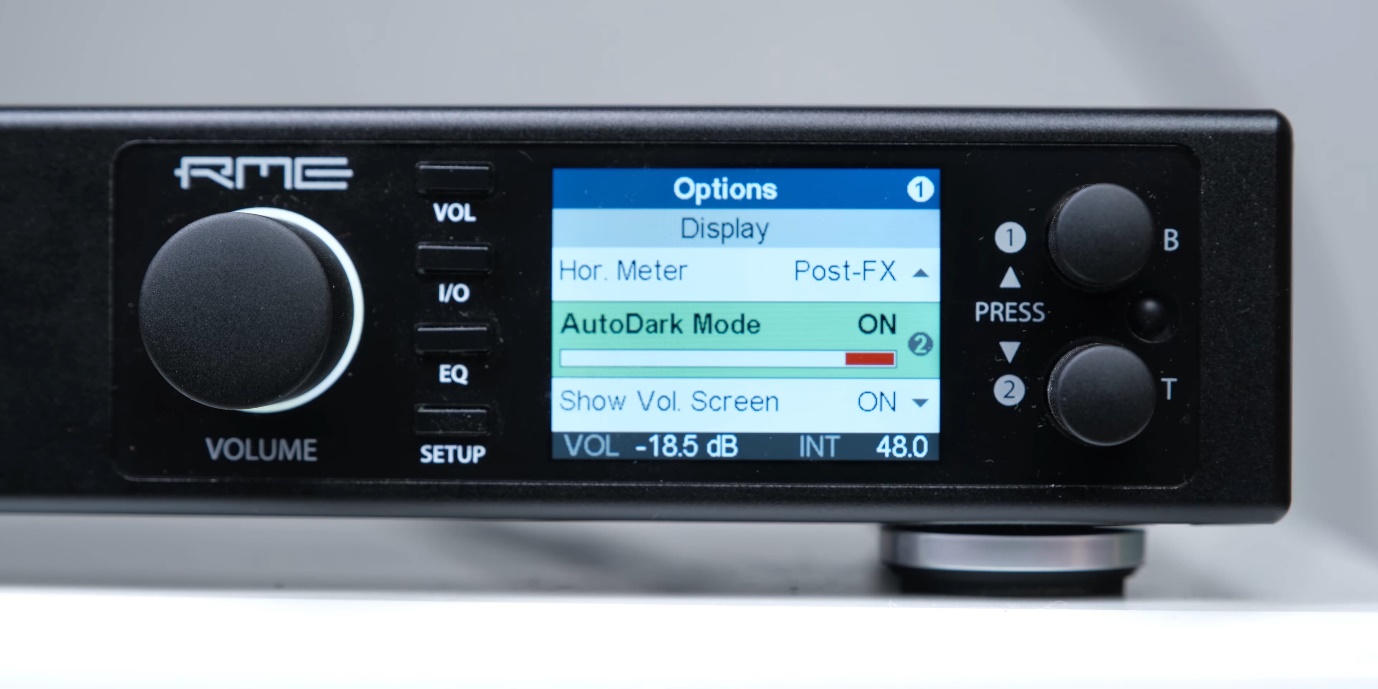
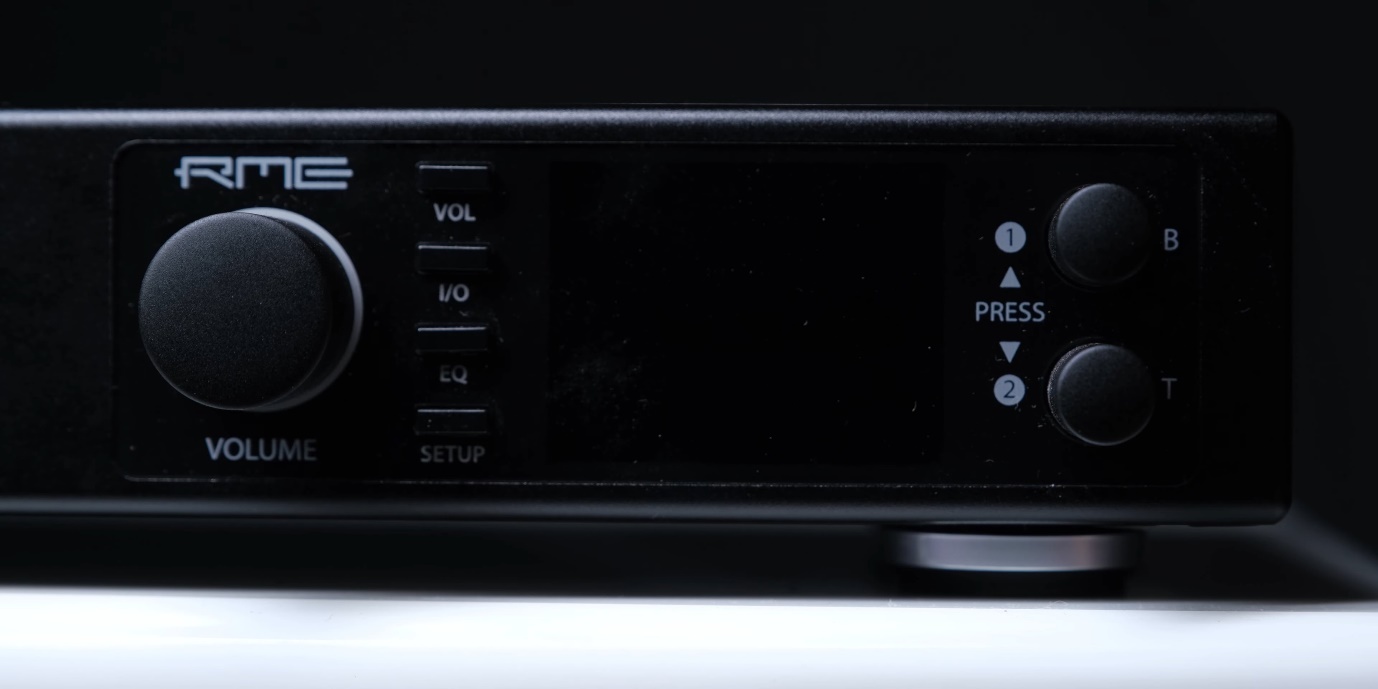
You may not always want the screen and the buttons to be lit up, so the DAC also has an auto-dark mode which turns off all the lights on DAC after 3 seconds of inactivity.
REMOTE

The ADI-2 DAC comes with a very useful remote, and it really allows you to adjust most of the useful settings on it. You can control the volume or mute it, adjust left and right channel balance, adjust the bass and treble, toggle loudness, EQ, and the bass/treble adjustment feature. There’s of course a power switch, and you have buttons to switch between different inputs and outputs, and then finally you have 4 buttons that are customizable and you can assign almost all functions to them. So by default they have functions like toggling auto dark mode, and DIMming the audio, but you can assign any function to them, and I have personally set these to different filters on this DAC that we’ll talk about later.

But it’s not just the buttons on this remote that are customizable, but the 4 buttons on this DAC can also be set to correspond to the quick functions on remote, so now you have your quick settings on both the remote, and the DAC itself, and you can long press these buttons for their default function of going into their specific menus, and this really saves you the effort of going deep in the menus to adjust your favorite settings.
The DAC can even be used by third party remote controls, so for example it is in Logitech’s remote control database, and RME has also made codes for other remotes available on their website, which I haven’t seen any manufacturer do.
EQUALIZER

The RME DAC has a very customizable Equalizer, and this also has been executed extremely well. So it has a 5 band parametric equalizer, and you can clearly see the 5 bands separated with different colors on the screen so it’s easy to adjust with the knobs on it. You can adjust the gain of a band, the frequency that you want it on, and its Q-value, which means that you can really fine-tune the correction that you want to have on your audio gear.
I always use an equalizer with my Hifiman HE-4XX, because I don’t like their sound signature, I don’t like how prominent the treble is on these headphones because it makes things sound unpleasant and less natural.
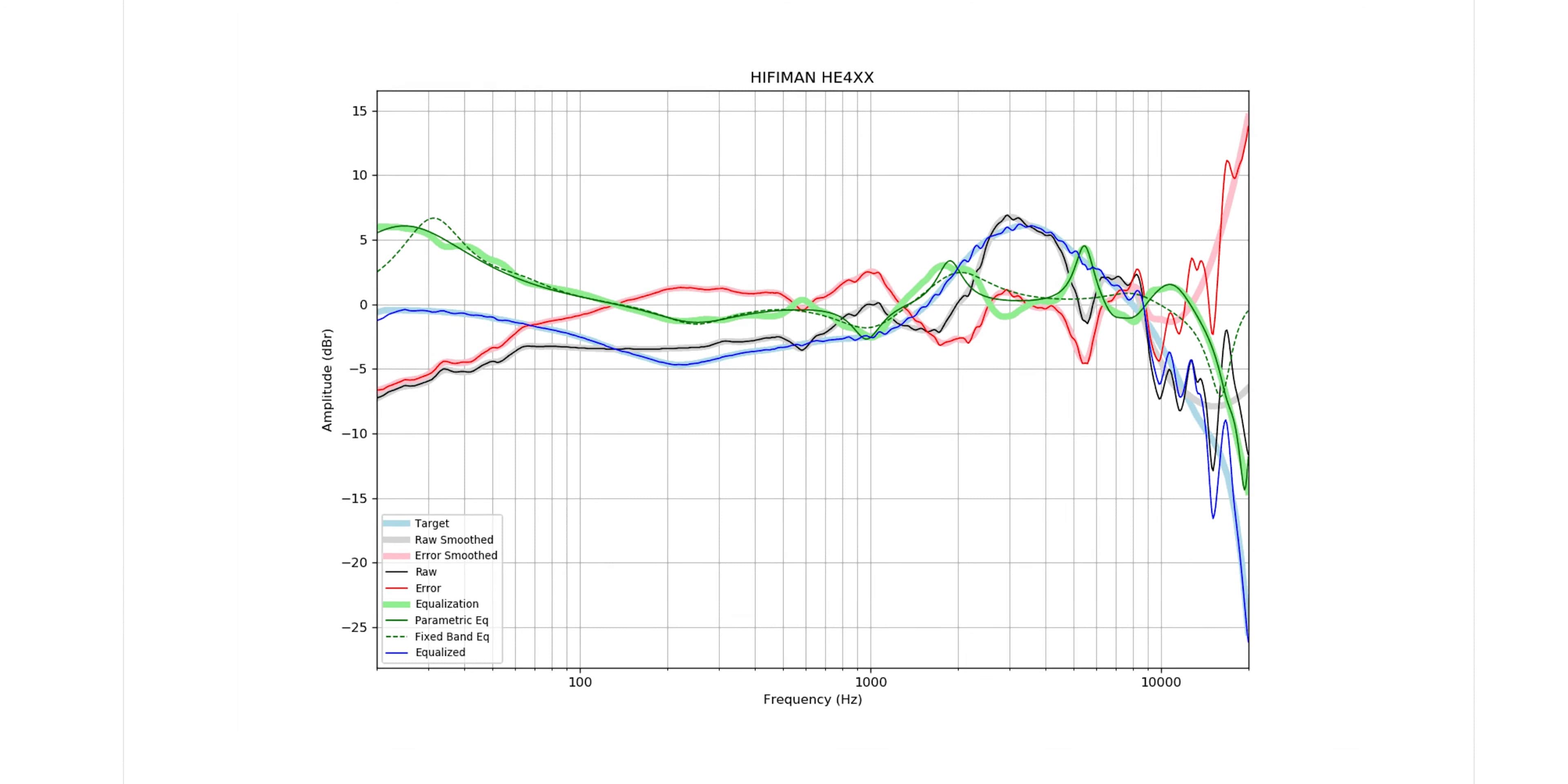
But using the AutoEQ settings on this headphone really fixes all the problems I have with its sound signature as that tunes different headphones and earphones to the Harman Curve preferred by the listeners.

So you can go to the Auto EQ page, and select your headphone or IEM, and then you can just use the top 5 bands in the parametric Equalizer section, and that will apply these EQ settings to the gear that you have.
Because the RME DAC only has 5 adjustable bands with the parametric EQ, I was worried that they may not be enough and that you may need 10 of these bands to get a complete control on the sound signature, but RME has also addressed this concern in their manual, and they have explained that beyond 5 bands of Parametric EQ it really makes a minimal difference, and in practice, my Hifiman HE-4XX also sounds almost identical to how it sounded when I used the Graphic EQ in Equalizer APO, so they do seem to be right there.
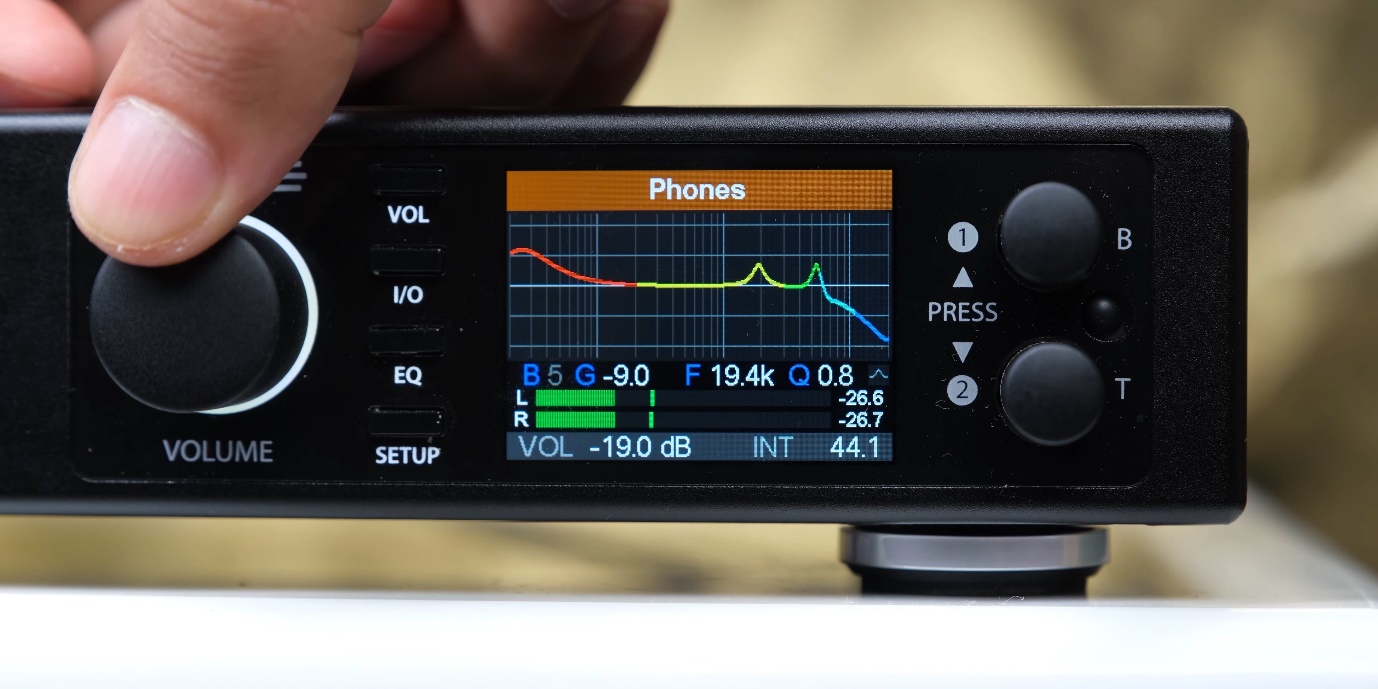
But the awesomeness doesn’t just end here, because all of the different outputs on the RME DAC can have their own equalizer settings, so I can only have this EQ enabled on the headphone out, and you can have different EQs enabled or disabled for your IEMs, headphones, and speakers.

This is such a game changing feature, because combined with ability to change channel balance when I am using this with my studio monitors, the RME DAC just completely eliminates the need for me to use the Equalizer APO software, and that is a very complicated piece of software, so the fact that you can completely replace that with an Equalizer that’s built into a DAC is something that I never thought was possible.
This is actually even better than using Equalizer APO, because when I used it, I always had to disable or enable different filters whenever I switched between headphones and speakers, but with the RME DAC, you never need to do that as it can apply different EQ settings specific to the output that you have selected.

But you might be a person who has more than one headphone, so you must be thinking that you’ll have to tweak these settings every time you change headphones, but the Germans have also taken care of that, because you can actually store 10 Equalizer presets on this DAC, and you can also rename them for specific headphone models so you can very easily select different EQ settings for different gear.
Just focusing on this point again, that you can rename equalizer presets on a DAC.

You can also of course use EQ for room correction with your speakers, and if you’re using a DAW or any other software with ASIO output, it bypasses the software equalizers like Equalizer APO, so the output from these software will also have the EQ settings applied, which is just not possible with other methods.


And if you thought that this was the limit of their Equalizer implementation then you would be wrong, because there’s actually more to it, and you can actually have different Equalizer settings applied to the left and right channel, and while there are some niche use cases for this Dual EQ Mode, if you have suffered an injury or other health problem that has affected your hearing, you will most probably have a difference in how both of your ears hear sound, so with this feature, you can set a different sound signature for one ear to compensate for the difference, and this can be a ‘heaven sent’ feature for people who have impaired hearing.

They’ve also built in a feature called loudness which boosts the treble and bass when you lower the volume, and because of how our ears hear sound, doing this at lower volume keeps the music sounding good.

Now a difference between listening to headphones and speakers is that when you’re listening to speakers, the sound from the right channel goes to your left ear, and the same happens with sound going from left channel to your right ear. With headphones you don’t experience this phenomenon, because the sound is isolated on both channels for each ear.
So this DAC has a feature called cross feed, which tries to emulate the feeling of listening to a speaker on a headphone by feeding some frequencies from each channel to the other one, and it also includes a calculated delay, so even though I personally don’t use this feature on headphones, it is there for people who prefer using it, and it’s not easy to find media players that have this feature.

You can also change the stereo width of your audio, which is not the same as crossfeed, and you can not only make it narrower but can also make it go in reverse, which swaps the left and right channel.
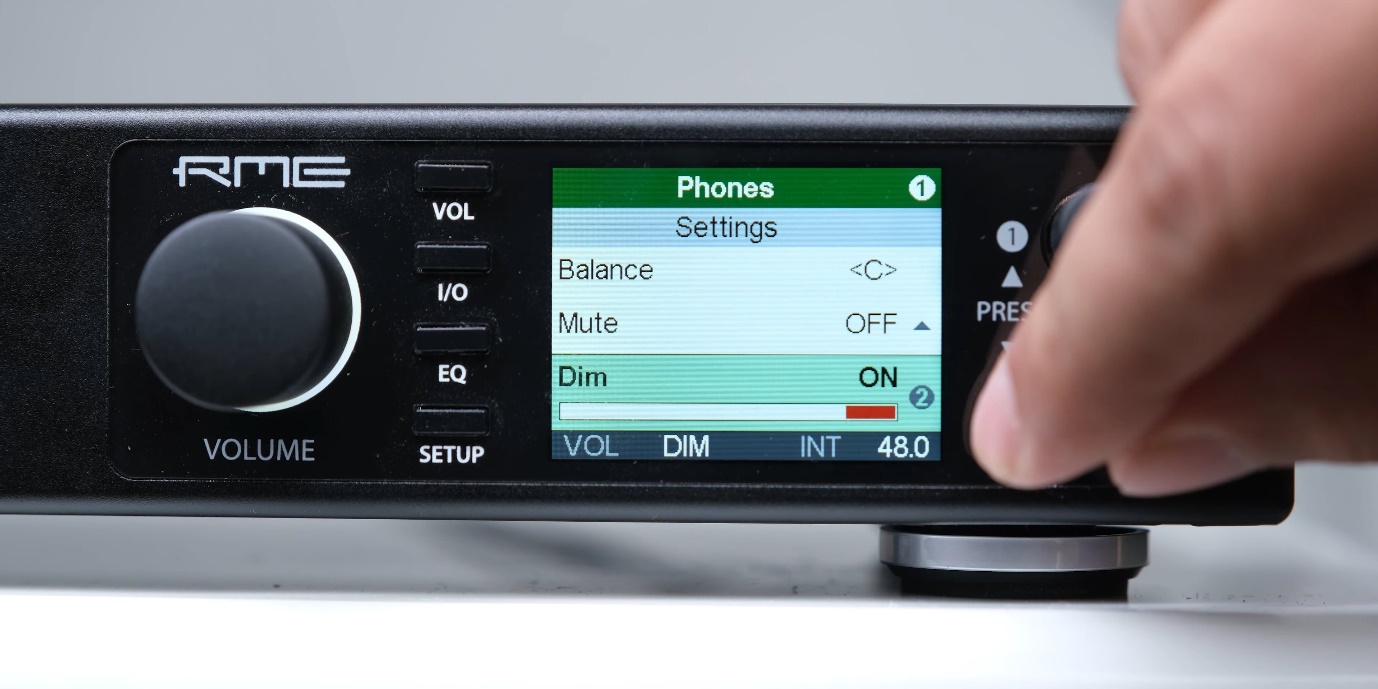
It is also very easy to make the signal mono with a single button, so with the addition of the ability to DIM the audio, change input and outputs, and control volume, this has really made my Mackie BIG knob obsolete for my desk, and this is why the RME ADI-2 DAC really is a single unit replacement for all your audio setup needs.
DAC FILTERS

The DAC has different conversion filters that you can select between, and they have given the impulse response charts of these filters in the manual. The Short Delay Sharp is the default filter and has the least latency, and the Non Over Sampling filter looks really good but there’s actually more to these filters than their graphs.
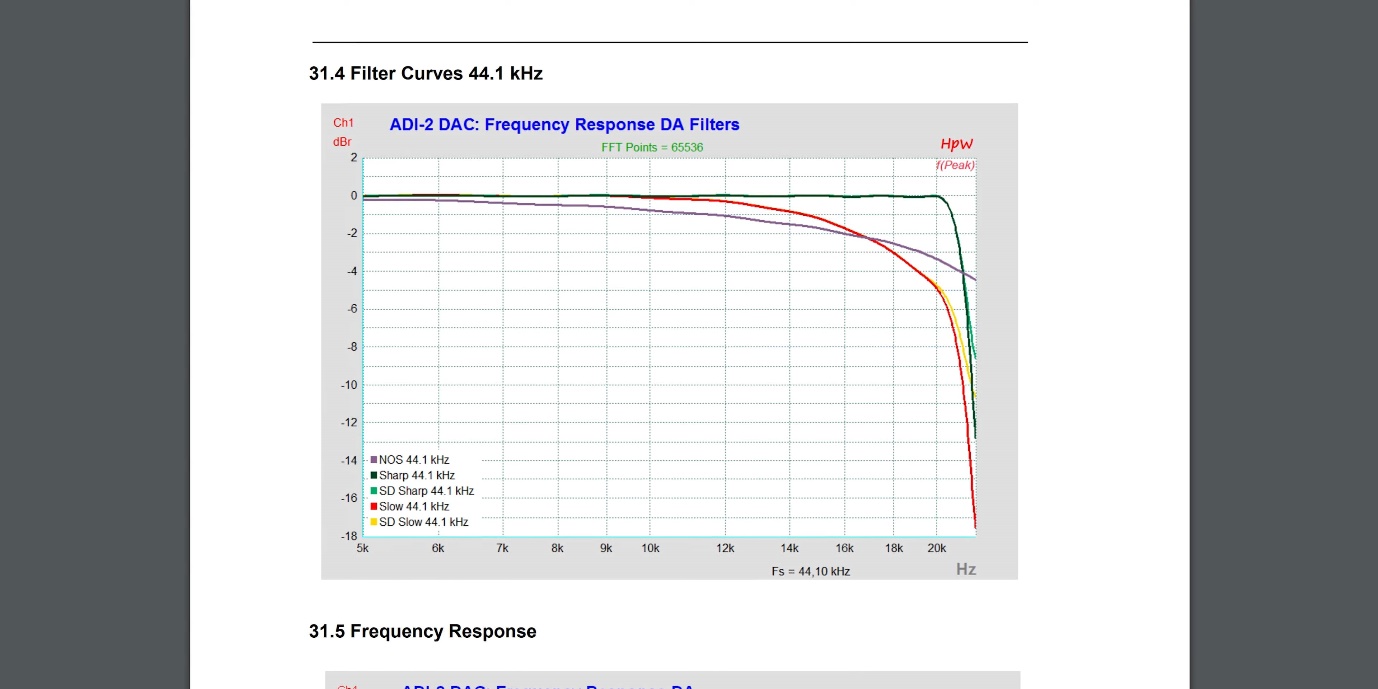
Now I don’t hear an audible difference between these filters that I was expecting seeing their graphs, so even though one might have a more wiggly graph than another, it may not be audible in practice, but the difference that is audible between these filters is that of their frequency response, because the the high frequency roll off in the NOS filter is audible.

So I switch to the NOS filter when I am listening to tracks that are treble heavy, so the NOS filter nicely rolls off their edge, otherwise I use the sharp filter as a default, and I have set it to shortcut buttons on the DAC and the remote, so I can quickly switch between them.
PERFORMANCE
The reason I bought it is because I just wanted an endgame DAC for me, because after upgrading to different DACs I realized that there’s no point of getting a 400 or 500 dollar DAC if I will need to make another higher priced purchase later on, and this DAC has REALLY delivered on MUCH more than what I wanted it for.
I personally only needed a DAC, with my budget of 1 lakh Rs., so I thought I would get the best standalone DAC possible, and then I could upgrade my headphone amp later on. So after a lot of research, the two products that I was confused between were the Chord Qutest, and this RME DAC, and if you watch audio gear reviews you must know all the hype that surrounds Chord products so I was also quite intrigued by that.
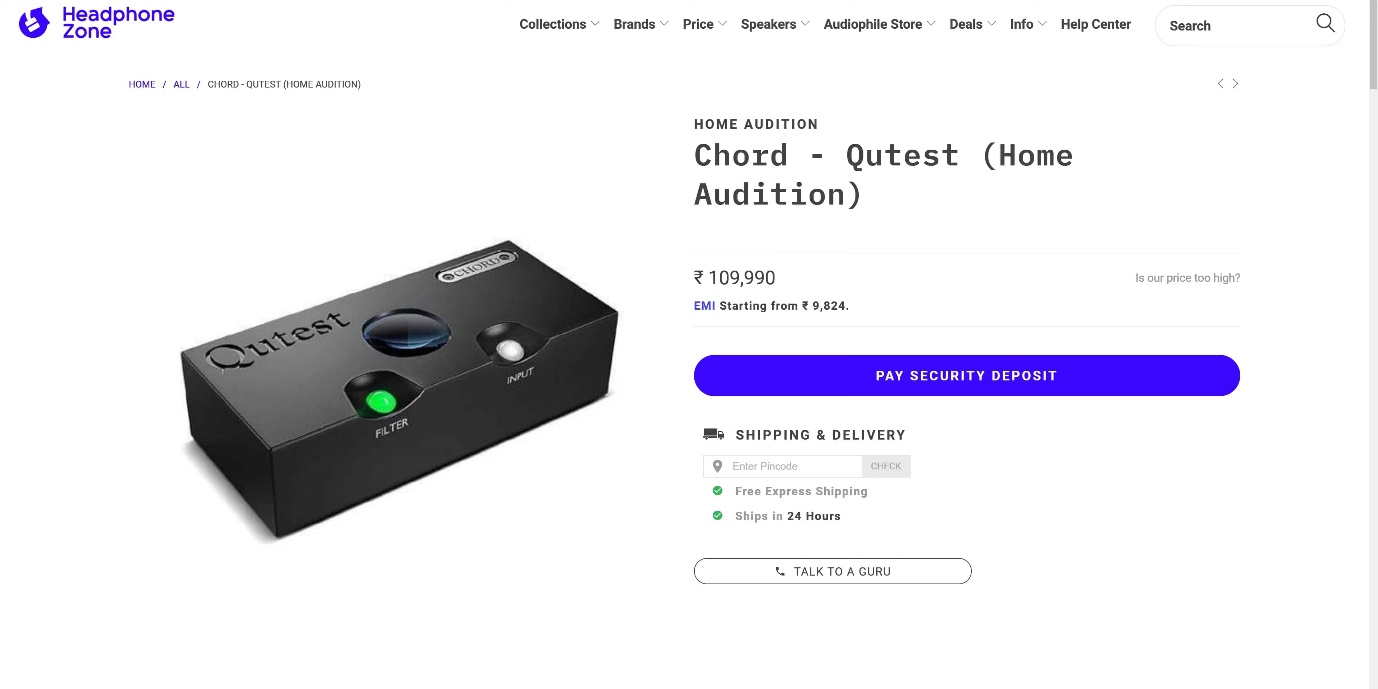
Now if you try to find out which one of these sounds better, just as a standalone DAC, then you would find that most people on the internet say that both these products are VERY close in sound quality, with some people preferring the Chord Qutest, and some people actually preferring how the RME DAC sounds.
There is a lot of vagueness and subjectivity when it comes to audio gear reviews, and the high end DACs can actually be quite difficult to find differences between, but even if Chord Qutest is slightly better in sound quality, let’s just say for example that it is 5-10% better in sound quality, even if that is the case, the RME ADI 2 DAC just blows its competition completely out of the water because it packs an unthinkable variety of features and control over sound that will be more than enough for even the choosiest of the audiophiles. There are lots of snake oil concepts and opinions in the audiophile community, but once you consider the sheer practicality that a device like the RME ADI-2 DAC can bring to your audio setup you will really understand what kind of unsurpassable value it delivers, without compromising on the performance.
The RME DAC has their Steady Clock FS technology, which makes it have extremely low jitter and it doesn’t have to depend on the quality of the incoming clock signal. It can convert up to a 32 bit 768 KHz signal, and it supports DSD direct but not MQA, which I personally don’t care about. The DAC Chip inside is AKMs AK4493, and that is the extent of specs and numbers that I am going to discuss.
So first I tested this DAC with my Adam A5Xs, and I compared the sound with my 100 Dollar
SMSL Sanskrit DAC which is also pretty great at its price point. I have talked about this in my Adam A5X review, but the RME DAC just took the soundstage and quality of the A5Xs on a totally next level.
The depth of the soundstage increased so much that it feels like sound is coming from a point behind my display monitors, and this really opened a new dimension of experiencing sound with my Adam speakers.
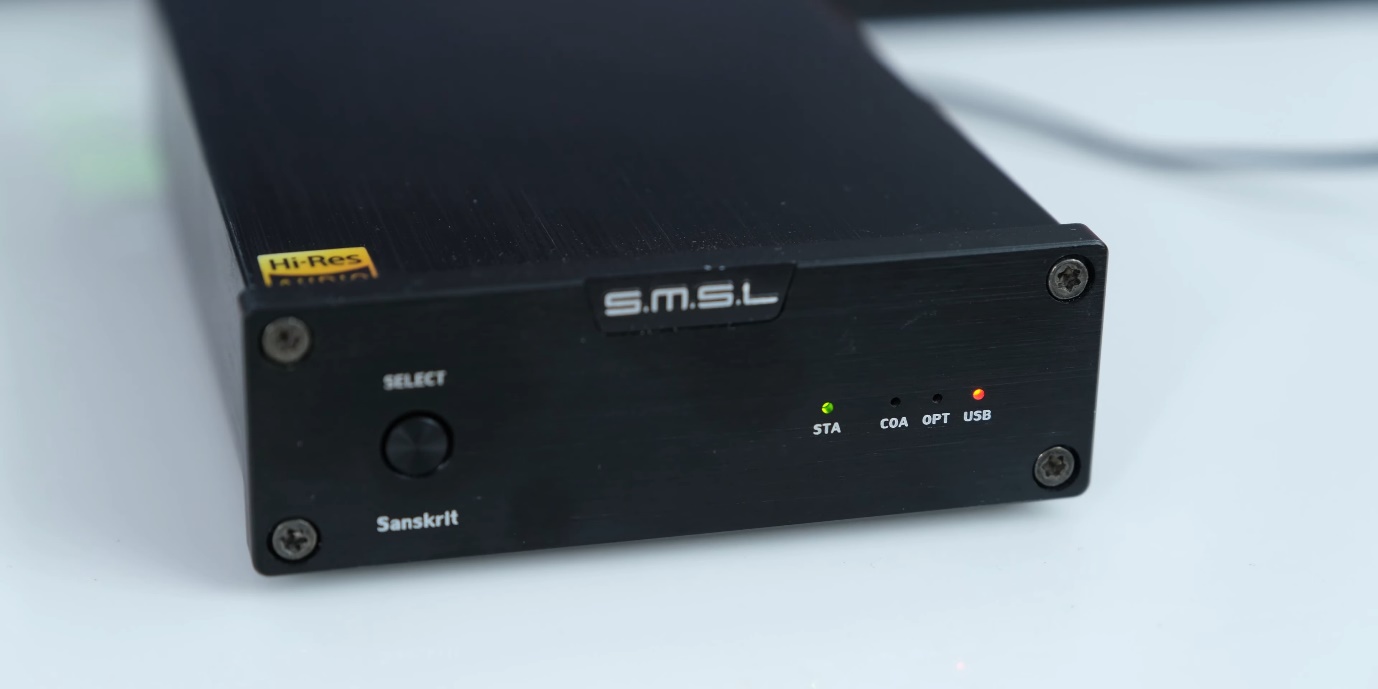
The biggest difference in the quality of the sound was in the vocals, because when I switched between my RME DAC and the SMSL Sanskrit, the vocals on SMSL Sanskrit felt really bad in comparison because the vocals felt very compressed and artificial.
The vocals on the RME DAC were MUCH more natural in comparison, and I never realized what I was missing with the SMSL Sanskrit until I made this comparison. Now of course there is a HUGE price difference between these two DACs, the RME DAC costs 10 times as much as the SMSL DAC, but once you have a decent enough DAC like the Sanskrit, upgrading the DAC might not make a huge difference, and you may have to listen carefully to notice changes.
So the fact that the difference with the RME DAC was so big and obvious really tells you what kind of a jump there is in the performance of its DAC.
I also tested my Hifiman HE-4XX planar magnetic headphones with this, and while these are not the most power hungry headphones, these do require a good amount of power to sound good.
The headphones also sounded significantly better compared to my stack of Objective 2 headphone amplifier connected to my Sanskrit DAC.
I am not sure if the HE-4XX are high end enough to benefit fully from the potential of the RME DACs DAC and Amp, but even so, they sounded more natural, the soundstage got wider, and it really felt like I got a small headphone upgrade.

So the headphone and IEM amplifiers on the RME ADI 2 DAC aren’t just an afterthought, but they also perform very well, and are powerful enough to drive most, if not all kinds of high end headphones.
From a technical standpoint, these outputs are also really great with extremely low distortion numbers, I’ll have some performance figures on the screen which you can read if you’re interested, but the result of all this is that you don’t hear any hum, noise, or distortion, and you get very clear sound at all volumes.
Another really great thing about these outputs is that whenever you switch outputs or plug in headphones, the amplifier doesn’t just blast it with full power, but it ramps up volume slowly and reaches to the volume that you’ve set in around 2 seconds, so in addition to giving you a very smooth feeling of transitioning into your audio, it also allows you to mute volume or remove headphones from your head if you’ve set them too loud.
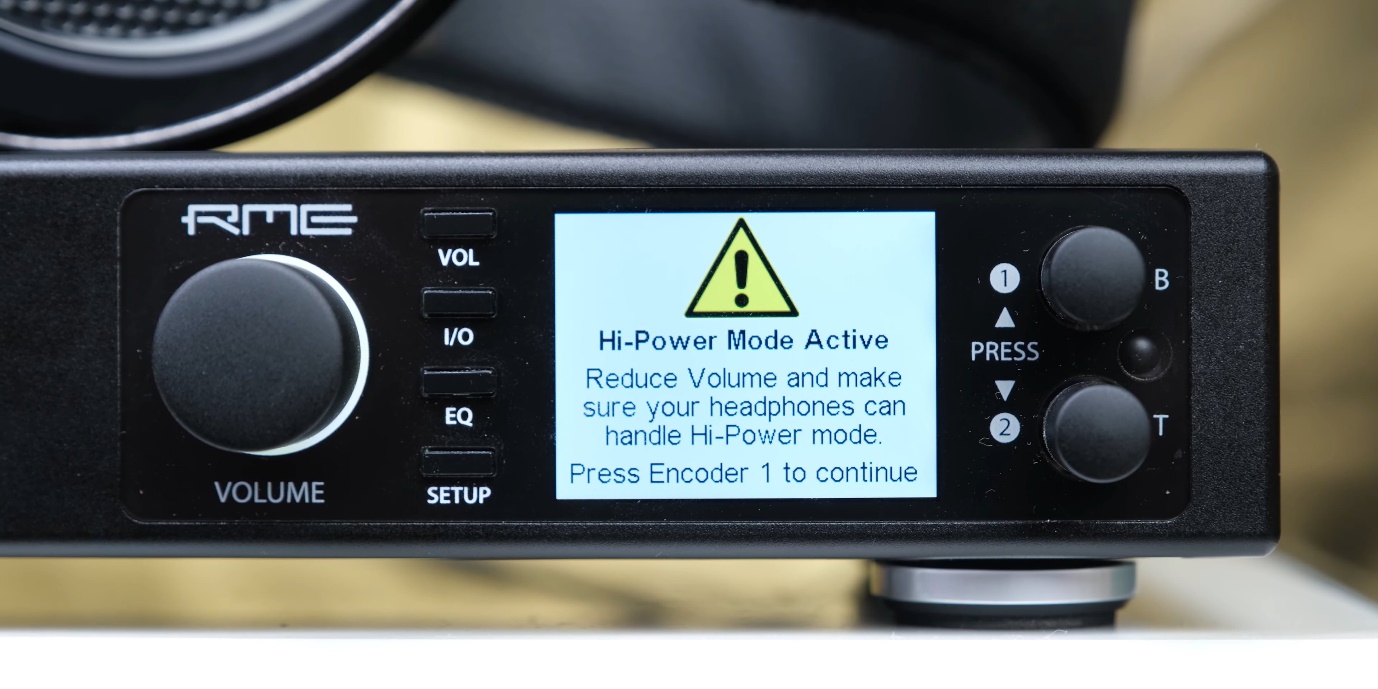
You can toggle the high power mode on the amplifier on and off like many other devices, but if you have set it to high power mode, and your gain is higher than negative 15 dB, and then you plug in a headphone, it doesn’t start the playback, but it gives you a warning about how the output volume is too high for regular headphones, and then you have to press one of its knob to start playback when you know that you have plugged in something that can handle its power.
This can come in really handy and save your headphones and your ears from damage, so this level of intelligence in an audio device is something that I really appreciate.
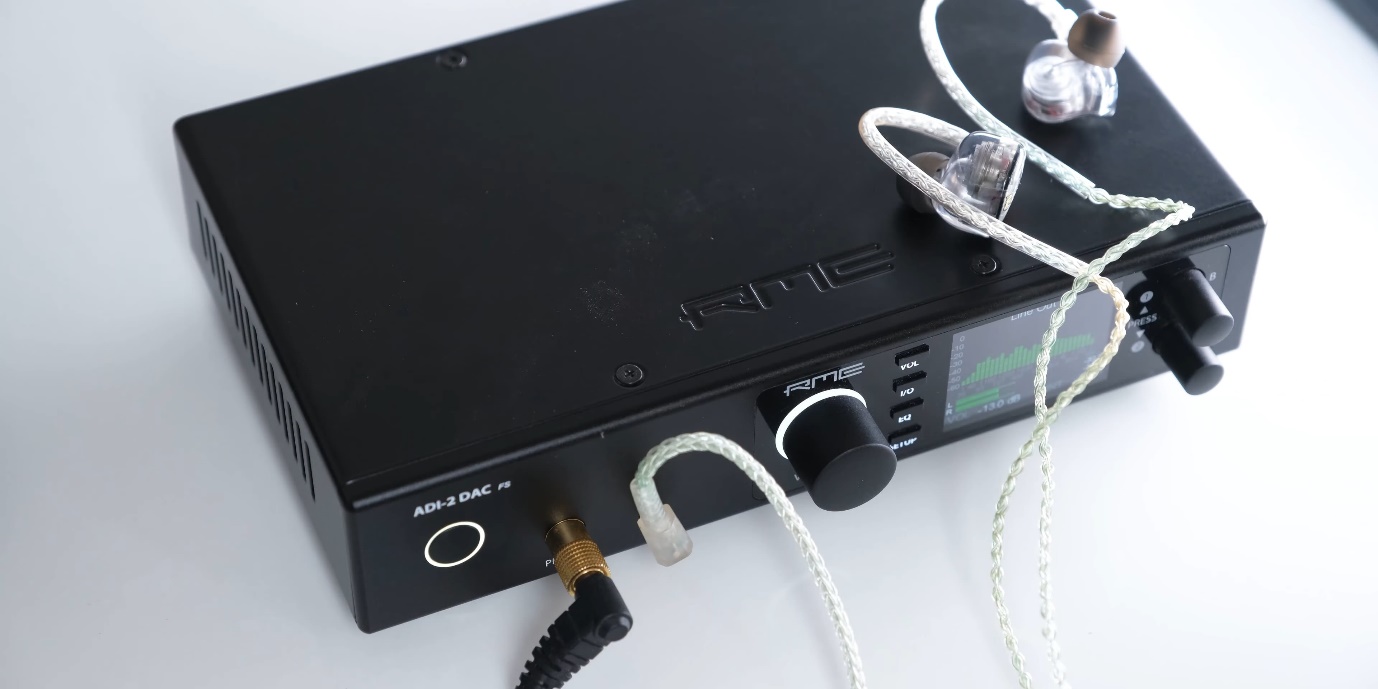
The IEM output on the RME DAC is also really good, and it is great to have a separate low power output for your smaller IEMs, because they will never be at risk of getting damaged by the high power of headphone output.

Now the only drawback to the amplifier we have on it is that it is not balanced, but if you feel that you really need that, you can get a balanced amplifier and still use this as a DAC in your system, because it does have balanced XLR output.
CONCLUSION
So in conclusion, the RME ADI-2 DAC truly offers a level of control over audio that I never imagined I would see in a product on a hardware level. I am almost emotionally moved by how well thought out this DAC is, because after years of seeing products that mostly have something about them that could be improved, this DAC just over delivers in all areas and it just overwhelmed me with how well something like this can be executed.
Even with the length of this video, I had to skip many features like the ability on this DAC to actually record PCM and even DSD audio digitally over SPDIF.
It is again not a cheap device with its 1200 US dollar or 1.1 Lakh Rs. Price tag, and you can decide how valuable what it does is for you, but personally as a product reviewer, this DAC has just gone beyond the concept of price tag for me, and I truly think that this is one of the best deals in high end audio.
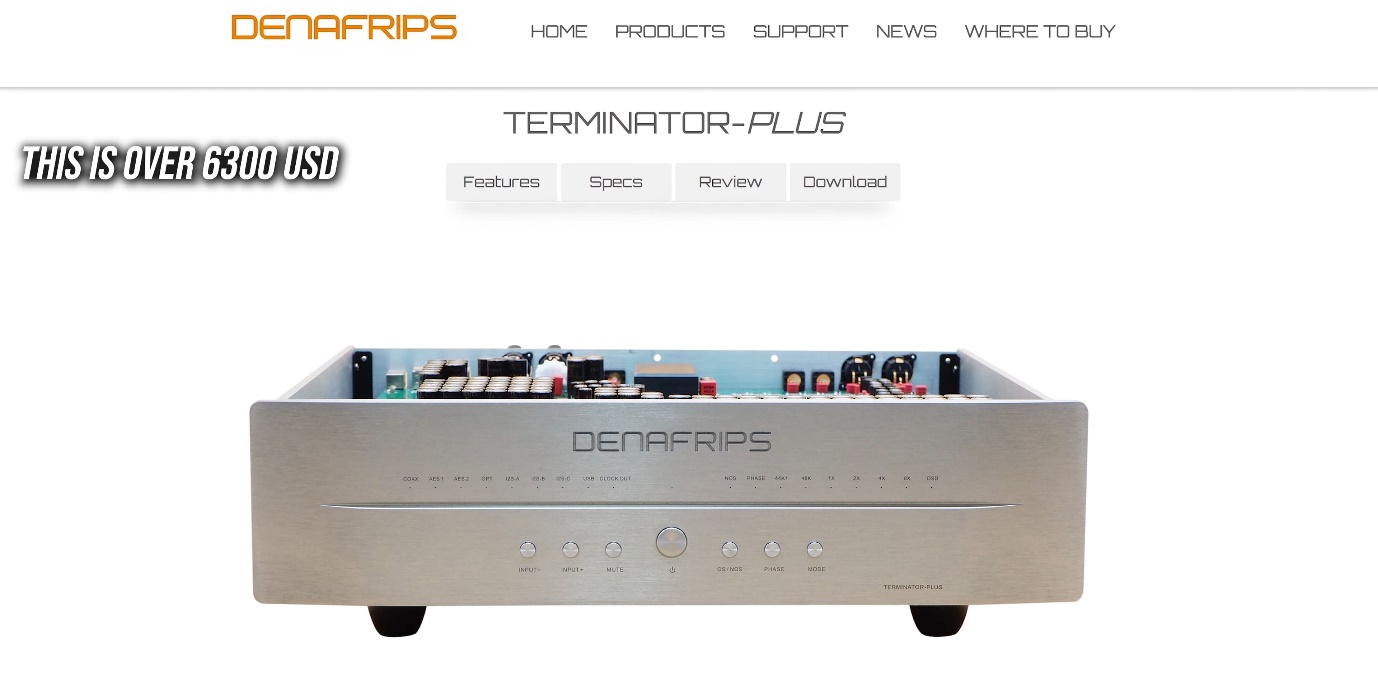
You can dig an even deeper hole in your pocket, and get some exotic R2R DAC, but personally for me, this is the point where I feel very comfortable settling at for the foreseeable future, and I don’t know of any other product that can touch this in terms of functionality along with it’s performance.

So I’ll of course have links to buy this, but if you’re in India, you may not be able to find this easily, so you can check out Ansata Computers website and order from them because that’s where I bought it from. I was a little skeptical about paying this huge amount online, but then I checked out RMEs website where they are listed as RMEs official national distributor, and then I also talked to them, and they exclusively deal with pro audio gear so they have very specific clients. So then I ordered this, and got this delivered very quickly and safely, so getting this in India was really not as complicated as I had initially thought.
Another really great news is that for the people whod’ve made it this far in the video, Ansata is also providing a real audio nerd discount, and you can get 10% off of the RME ADI-2 DAC, if you apply coupon code ‘SIDBHARAD’ on on their website at checkout, or follow the link I have below, where I’ll also have some other interesting offers.
10% off on it is actually around 10,000 Rs., which is pretty sweet, and you can also buy on EMI if you don’t want to take a big hit on your wallet in one go.
⭐ Buy RME ADI-2 DAC FS on Ansata Computers with 10% off Exclusive discount: https://www.ansata.net/TechReflex
✨ Coupon Code (Already applied on link above): SIDBHARAD
✨ Get 5% off on ALL products on Ansata website, Apply coupon code SIDBHARAD5 during checkout
⭐ Buy RME ADI-2 DAC in US: https://amzn.to/30bYa4Z
⭐ Checkout Chord Qutest: https://bit.ly/2J1E9IU
